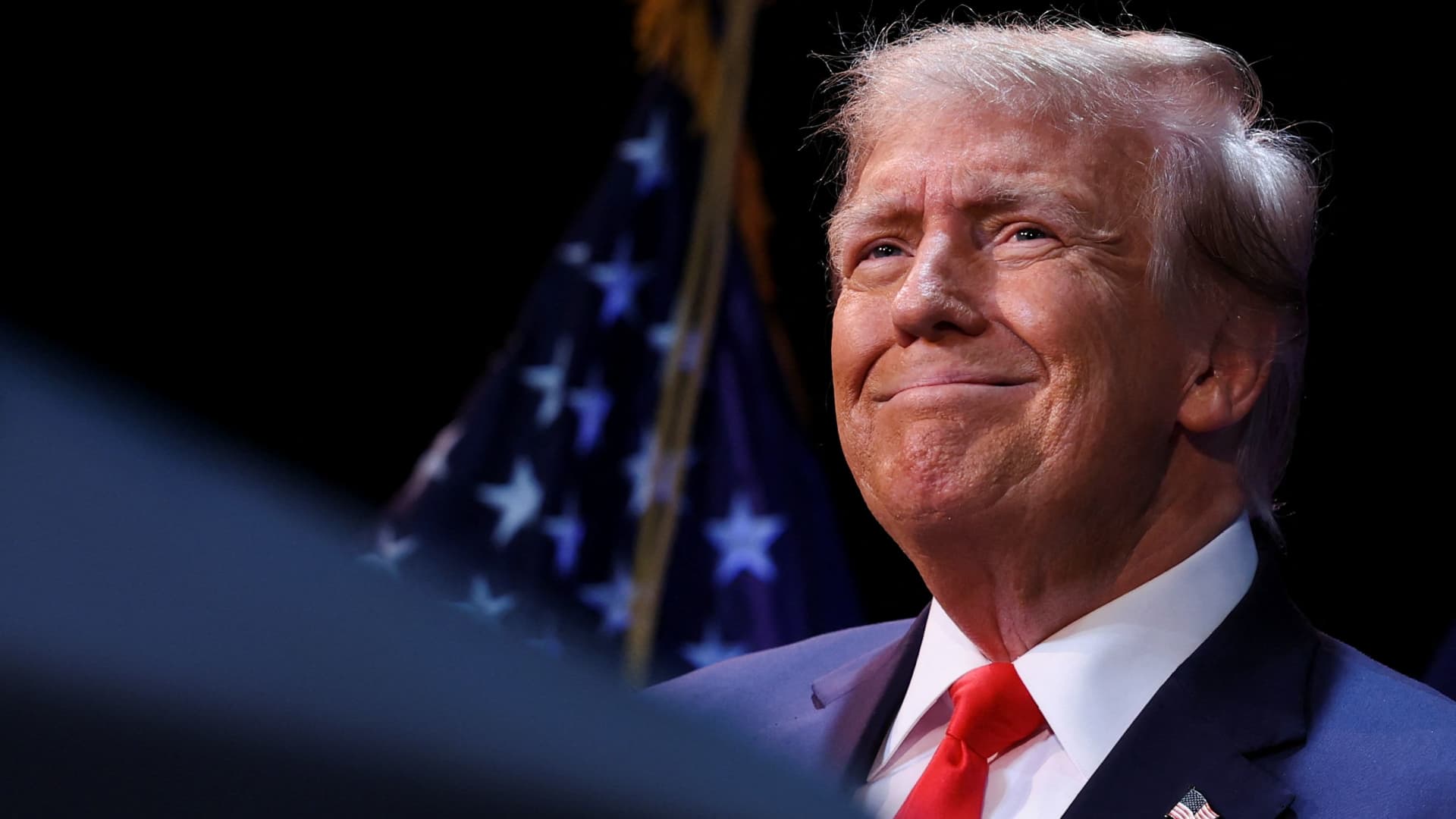Former U.S. President and Republican presidential candidate Donald Trump holds a rally in advance of the New Hampshire presidential primary election in Rochester, New Hampshire, U.S., January 21, 2024.
Mike Segar | Reuters
Markets need to begin thinking about the structural impact of Donald Trump’s proposed 10% tariff increase, which “shakes up every asset class,” according to Rabobank Global Strategist Michael Every.
The former president, and overwhelming favorite to secure the Republican nomination for the 2024 race, plans to impose a 10% tariff on all imported goods, trebling the government’s intake and aiming to incentivize American domestic production.
Treasury Secretary Janet Yellen said earlier this month that the plan would “raise the cost of a wide variety of goods that American businesses and consumers rely on,” though she noted that tariffs are appropriate “in some cases.”
Criticism of the policy has been relatively bipartisan. The Tax Foundation think tank highlights that such a tariff would effectively raise taxes on U.S. consumers by more than $300 billion a year, along with triggering retaliatory tax increases by international trade partners on U.S. exports.
The center-right American Action Forum estimated, based on the assumption that trading partners would retaliate, that the policy would result in a 0.31% ($62 billion) decrease to U.S. GDP, making customers worse off and decreasing U.S. welfare by $123.3 billion.
After Republican rival Ron DeSantis ended his bid for the GOP nomination, Every told CNBC’s “Street Signs Asia” on Monday that markets were “not going to be caught napping” by a potential Trump presidency, as they were in 2016. He suggested one of investors’ top concerns would be the 10% tariff on all U.S. imports.
“First of all, they can’t model that because they don’t really understand what the second and third order effects are, and more importantly, they don’t grasp that Trump isn’t talking about a 10% tariff just because it’s a 10% tariff,” he said.
“He’s talking about structurally breaking the global system by hook or by crook to basically reindustrialize the U.S. in a neo-Hamiltonian manner which is how the U.S. originally industrialized, putting up a barrier between it and the rest of the world so it’s cheap to produce in America and more expensive to produce everywhere else if you’re importing into America.”
A second Trump term
Every added that a return to this type of trade policy “shakes up every asset class — equities, FX, bonds, you name it — everything gets put in a box and shaken around, so that’s what markets should start thinking about.”
In the American Action Forum’s November report, Data and Policy Analyst Tom Lee concluded that in the most likely scenario that trading partners impose retaliatory tariffs, a new 10% duty on all goods imported to the U.S. would “distort global trade, discourage economic activity, and have broad negative consequences for the U.S. economy.”
Trump floated the 10% tariff during an interview last year with Fox Business’ Larry Kudlow, his former White House economic advisor, saying “it’s a massive amount of money.” “It’s not going to stop business because it’s not that much,” he claimed, “but it’s enough that we really make a lot of money.”
During his first term in office, Trump triggered a trade war with China by unilaterally slapping $250 billion worth of tariffs on goods imported from China, which the AAF estimated have cost Americans an extra $195 billion since 2018.
China responded with its own tariffs on U.S. goods, and Trump also imposed tariffs on steel and aluminum imports from most countries, including many of Washington’s biggest allies.
Keen to maintain a firm stance on Beijing, President Joe Biden’s administration has largely kept these tariffs in place, though converted some of the metal tariffs into tariff-rate quotas, which allow a lower tariff rate on particular product imports within a specified quantity.
Dan Boardman-Weston, CEO of BRI Wealth Management, said the macroeconomic and geopolitical landscape is now very different and more challenging than when Trump’s first term began in 2017, and added that his erratic approach to policy decisions would add to the kind of uncertainty that markets most dislike.
“In 2017, markets really appreciated the Trump presidency because of all the tax cuts and deregulation, and there was a more conducive market environment I think back then, with where rates were, for markets to move higher,” he told CNBC’s “Squawk Box Europe” Monday.
“I think this time is going to be very different, and I do think the geopolitical risks across the world are rising, and this doesn’t seem to be on investors’ radars as of yet.”
He noted Trump’s tendency to “change his mind” so frequently on geopolitical issues that “people won’t know where his thinking is at.”
Trump has claimed that he would stop Ukraine’s war with Russia within 24 hours, but has been economical with details of his supposed peace plan, and throughout his political career has lavished praise on Russian President Vladimir Putin.
He was also impeached by the U.S. House of Representatives for allegedly threatening to withhold U.S. military aid to Ukraine unless President Volodymyr Zelenskyy sanctioned a politically-motivated investigation into his then-leading electoral challenger, current President Joe Biden.
“That unpredictable approach to how he will approach the war in Ukraine or how he will approach relations with China and Taiwan I think lead to heightened risks from a geopolitical perspective, which I think will impact into market valuations,” Boardman-Weston said.
“It’s that added element of uncertainty in an already very uncertain world.”
